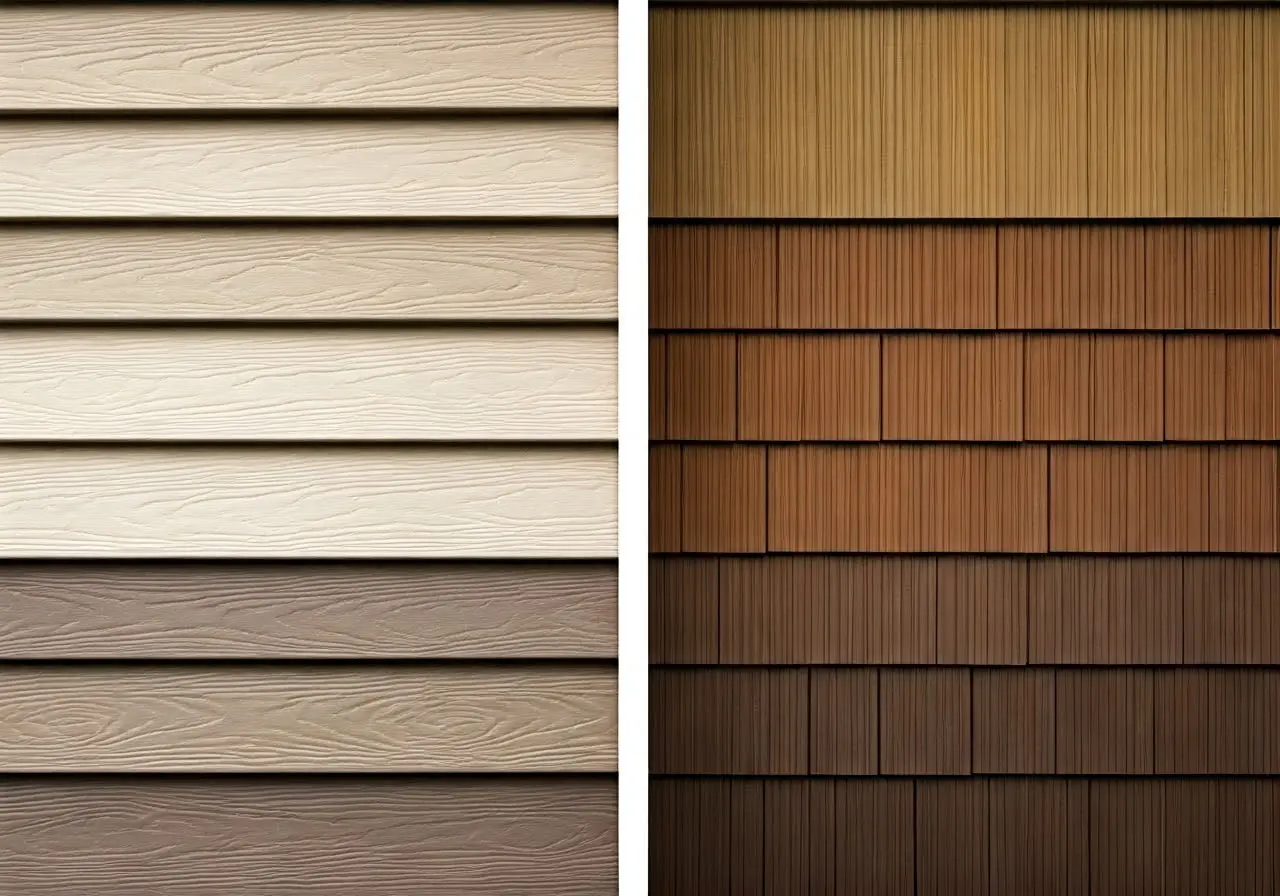Choosing the right siding for your home can be a daunting task, especially when you are faced with an array of options. Among these, vinyl siding is quite popular, but how does it stack up against other siding materials? In this FAQ, we’ll explore the key factors to consider when comparing vinyl siding to other materials.
What Is Vinyl Siding?
Vinyl siding is a type of plastic exterior cladding used for weatherproofing and decorating homes. It’s popular due to its durability, ease of maintenance, and a wide variety of styles and colors.
Introduced as an alternative to aluminum siding in the 1950s, vinyl siding has become a staple in both new constructions and renovation projects. Its composition of polyvinyl chloride (PVC) makes it resistant to moisture and pests, ensuring a long-lasting exterior solution for homes.
In addition to being practical, vinyl siding offers a range of design possibilities. Homeowners can choose between vertical and horizontal layouts, and a myriad of textures, such as smooth or wood-grain finishes. This adaptability allows it to fit seamlessly into various architectural styles, from modern to Victorian.
Durability Comparison
When comparing durability, vinyl siding is known for its resilience against elements like wind, rain, and sun. Unlike wood, it doesn’t rot or warp, but it can crack under extreme cold or severe impact.
Compared to fiber cement siding, vinyl has the advantage of not requiring frequent repainting or sealing, which can help maintain its structural integrity over time. Despite its vulnerability to cracking, it fares well in areas with fluctuating weather patterns.
Notably, vinyl siding is engineered to withstand harsh weather conditions, including strong winds, heavy rain, and even hail. Its composition of PVC resin enhances its longevity, making it a reliable choice for homeowners seeking minimal upkeep paired with robust protection.
Cost Analysis
Vinyl siding is generally more affordable than brick or stone and offers good value for money with its longevity and low maintenance needs. However, it’s generally more expensive than wood or fiber cement options.
In addition to its competitive initial cost, vinyl siding can result in cost savings over time due to its minimal maintenance requirements. Unlike materials such as wood, which requires repainting, vinyl siding remains vibrant with just occasional cleaning.
From a financial standpoint, choosing vinyl siding can provide substantial return on investment. According to a recent study, homeowners can expect a significant recoup on installation costs due to its added curb appeal and durability Choosing the Right Type of Vinyl Siding.
Aesthetic Versatility
One of vinyl siding’s advantages is its wide selection of textures and colors, which allows homeowners to customize the appearance of their homes. While some argue it doesn’t have the natural look of wood, others appreciate its ability to mimic other materials.
Vinyl siding offers an outstanding level of aesthetic versatility, enabling homeowners to embrace a modern look or replicate traditional architectural elements with ease. The available finishes range from wood-like textures to ultra-smooth surfaces.
Whether you’re aiming for a rustic charm with board and batten vinyl siding or seeking a contemporary appeal with smooth matte finishes, there’s a vinyl option to meet your vision. Its adaptability in style makes it a popular choice for both renovation projects and new builds.
Maintenance Requirements
Vinyl siding requires minimal maintenance compared to other materials. Occasional cleaning with a garden hose is typically sufficient to keep it looking new, unlike wood, which requires regular painting or sealing.
In terms of upkeep, vinyl siding stands out for its low maintenance demands. As it does not absorb water, issues related to swelling or rot are virtually eliminated, cutting down on the need for constant attention.
Homeowners find peace of mind in the fact that vinyl siding does not need frequent repairs or costly treatments. Its capacity to endure the elements with minimal intervention ensures that time and resources can be dedicated elsewhere.
Environmental Impact
Though vinyl siding is not as environmentally friendly as some natural materials, its production has become more sustainable over the years. Its long lifespan also reduces the frequency of replacement, which helps in lowering its overall environmental footprint.
Vinyl siding manufacturing processes have evolved to reduce emissions and energy consumption compared to traditional cladding materials, making it a more sustainable choice Fiber Cement Siding vs Vinyl.
Despite these improvements, vinyl siding still presents some environmental challenges, such as the release of volatile organic compounds (VOCs) during production. However, its durability ensures a lengthy service life, reducing waste and resource use in the long term.
Final Thoughts on Vinyl Siding
Ultimately, the choice of siding will depend on your priorities, whether they’re aesthetic, financial, or practical. Vinyl siding offers a balance of benefits that might appeal to many homeowners, but it’s important to consider all factors and alternatives before making a final decision.


